
Caring for wounds in a wilderness environment poses unique challenges due to limited resources, potential delays in accessing professional medical care, and environmental factors that can increase the risk of infection. Understanding different types of wounds and how they can be effectively treated in remote settings is crucial for anyone venturing into the great outdoors. It’s essential to be prepared to perform initial assessments and apply immediate response techniques to manage injuries and minimize the risk of complications.
When an injury occurs in the wilderness, the first priority is to clean and protect the wound from contaminants in the environment which could lead to infection. Knowing how to properly clean and irrigate the wound, and when and how to close it, could be the difference between a quick recovery and a serious health issue. The materials you carry for wound care and your ability to use them effectively are paramount in ensuring safe wound management. Prevention is always preferable, requiring an understanding of both the environment and proper techniques to avoid injuries before they happen.
Special considerations must be taken into account when dealing with wounds in wilderness settings, such as the type of injury, the environment, and the availability of supplies. If a situation goes beyond the scope of field care, knowing when and how to evacuate to seek definitive care is a vital part of wilderness medicine. Continuing education in evidence-based practices and adherence to legal and ethical considerations are also significant for those taking on the responsibility of treating wounds in the wild.
Key Takeaways
- Proper wound care is vital to prevent infections in wilderness settings.
- Initial response and wound management techniques are key for safety.
- Wilderness environments require special considerations for effective wound care.
Medical Disclaimer:
The information provided in this blog article is for general informational and educational purposes only. It is not intended as a substitute for professional medical advice, diagnosis, or treatment.
Always seek the advice of your physician or other qualified health providers with any questions you may have regarding a medical condition or before administering any medications or relying on any treatments mentioned herein. Never disregard professional medical advice or delay in seeking it because of something you have read on this website.
The authors and publishers of this article are not healthcare practitioners or providers, and this content does not constitute medical advice. We do not guarantee the accuracy or completeness of any information presented and are not responsible for any errors or omissions, or for results obtained from the use of this information.
Use of the information provided is solely at your own risk.
Understanding Wound Types in Wilderness Settings

When attending to injuries in wilderness settings, you must be able to identify and categorize various wound types to provide effective care.
Classification of Wound Types
Lacerations, abrasions, and avulsions reflect cuts, scrapes, and the removal of skin, respectively. Burns vary in degree and are caused by heat, chemicals, or electricity. Blister formation results from friction, while open fractures, where the bone pierces the skin, and traumatic wounds from impacts or falls are more severe and require immediate attention.
Types of Wilderness Wounds
- Lacerations: Deep cuts or tears in skin or flesh.
- Abrasions: Wounds caused by skin scraping against rough surfaces.
- Avulsions: Severe wounds where tissue is forcibly detached.
- Burns: Tissue damage from overexposure to heat, chemicals, or electricity.
- Blisters: Raised sections of skin filled with fluid, usually from friction.
- Open Fractures: Bone breaks that puncture the skin, posing a high infection risk.
- Traumatic Wounds: Injuries that involve damage to underlying tissues and organs, often from blunt force.
Common Wilderness Injuries
Typically, abrasions and blisters are the most common injuries you might encounter. However, always be prepared for more severe scenarios like lacerations from a fall or sharp objects, and burns which may occur from campfires or boiling water. Open fractures, while less common, are serious and require stabilization and immediate medical attention. Avulsions and traumatic wounds are grave and necessitate prompt, advanced care due to risk of significant blood loss and infection.
Remember, quick identification and appropriate response to these injuries can prevent further harm and promote efficient healing.
Initial Assessment and Immediate Response
When you’re faced with a wound in the wilderness, your initial actions are crucial for preventing infection and ensuring the best possible outcome for the injured individual. Timely and precise response can mitigate the risks of severe complications.
Safety and Environmental Considerations
Before addressing any wound, ensure that both you and the injured person are safe from further harm. Remove any ongoing risk, such as moving away from precarious terrain or ensuring that the area is secure from wildlife. Use gloves if available, to protect both yourself and the patient from the risk of infection.
Primary Assessment for Wound Care
Examine the wound carefully to determine the type and extent of the trauma. Look for signs of an open wound that may require immediate attention, such as arterial bleeding, which is characterized by bright red blood spurting in rhythm with the heartbeat. Assess the patient’s level of consciousness and check for other injuries that may also need to be addressed.
Management of Bleeding
A critical step in the immediate response is to control any bleeding. For minor wounds, direct pressure with a clean cloth or bandage is often sufficient. If the bleeding is severe and you suspect a major blood vessel has been damaged, you may need to apply a tourniquet above the wound to reduce blood loss, but only if you are trained to do so. Whenever possible, elevate the injured area above the heart to slow the bleeding.
- Remember: Your quick and efficient response to a wound in a wilderness setting can make a significant difference in preventing infection and promoting healing.
Wound Cleaning and Irrigation
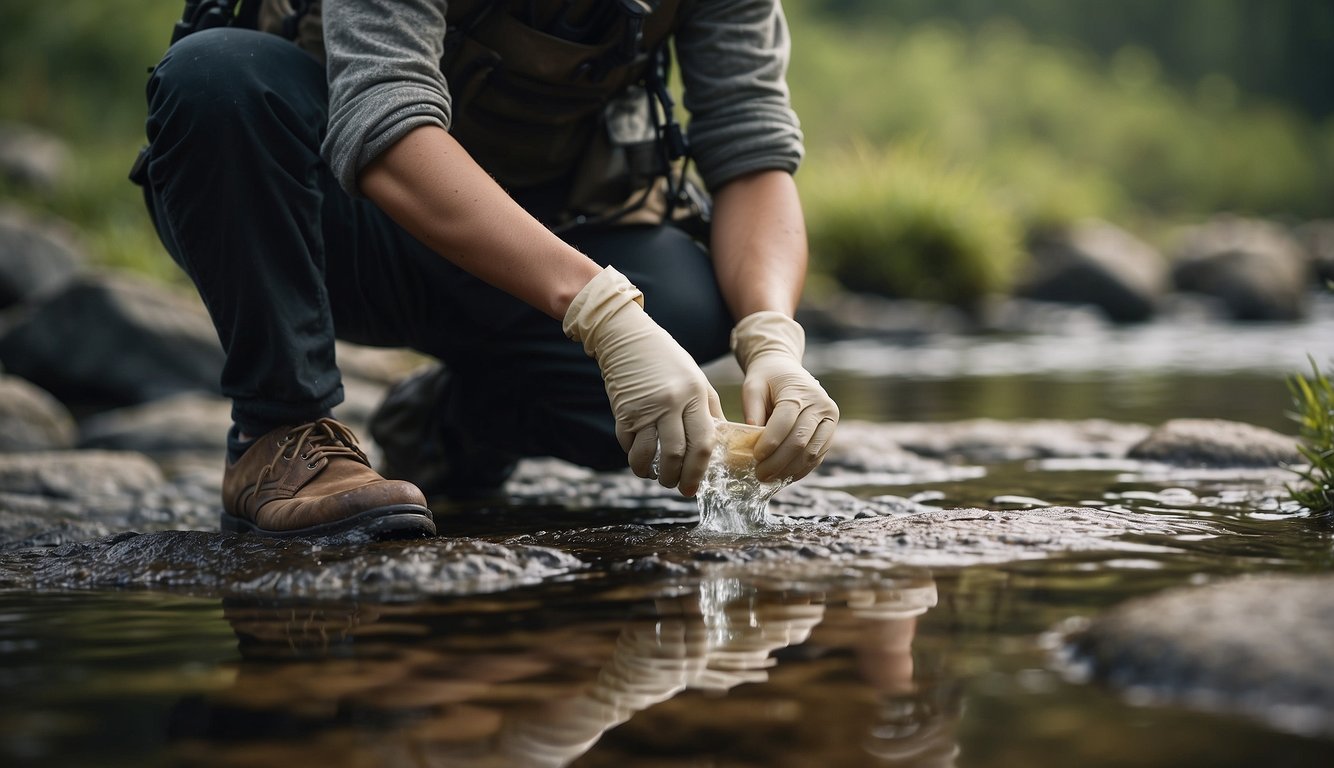
Proper wound cleaning and irrigation are crucial in preventing infections, especially in wilderness settings where professional medical assistance may not be readily available. This process involves removing foreign debris, utilizing efficient wound irrigation techniques, and conducting debridement procedures when necessary to ensure a clean wound environment conducive to healing.
Removing Foreign Debris
Before irrigating a wound, it’s essential to remove any visible foreign debris. This minimizes the risk of infection and facilitates the natural healing process. Use sanitized tweezers or gloves to carefully extract particles such as dirt, glass, or splinters. Ensure you have a clear view of the entire wound area to avoid missing any debris.
Wound Irrigation Techniques
Irrigation is a key step in wound cleaning to flush out any contaminants that may lead to a contaminated wound. The objective is to use a steady stream of sterile fluid to cleanse the wound thoroughly. You can use a syringe with a 19-gauge needle to achieve the necessary pressure for effective cleaning. Here’s a brief outline of the process:
- Preparation: Identify a clean water source or use saline solution.
- Application: Gently apply pressure to the syringe, directing the flow over all areas of the wound.
- Pattern: Start from the center and move outward in a circular motion to ensure coverage.
Debridement Procedures
When wounds contain dead tissue, debridement is necessary. This involves removing non-viable tissue that can harbor bacteria and impede healing. This procedure is delicate and must be performed with care:
- Identify non-viable tissue—look for tissue that is discolored, hard, or non-elastic.
- Remove dead tissue using sterilized instruments while preserving as much healthy tissue as possible.
- Evaluate the wound after debridement to ensure no further debridement is necessary at the time.
Perform these steps with surgical precision to ensure a clean wound that promotes optimal healing.
Wound Closure and Dressing
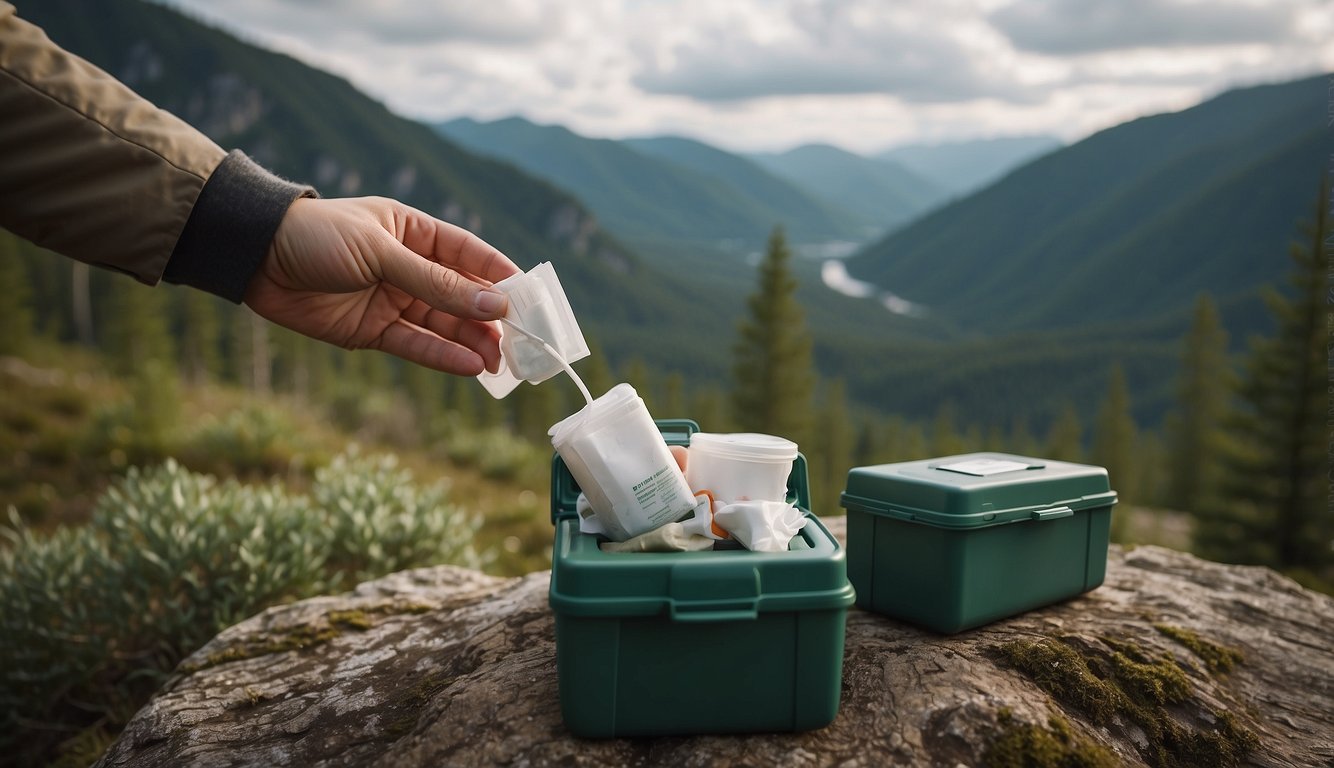
Effective wound management in wilderness settings reduces the risk of infection and promotes healing. Wound closure and dressing are critical for protecting the wound, minimizing bacterial contamination, and maintaining a moist healing environment.
Techniques for Wound Closure
When you need to close a wound, cleanliness is vital. Before attempting closure, ensure the wound is thoroughly cleansed. Here are common closure techniques:
- Steri-Strips or Butterfly Closures: These are suitable for small, clean cuts that can easily be closed.
- Sutures: Use sutures for deeper wounds that don’t close easily. Sutures require proper technique and sterility to reduce infection risk.
- Staples: Ideal for rapid closure of linear lacerations, although they require a specialized stapler and remover tool.
Remember that not all wounds should be closed immediately. Heavily contaminated wounds might need to be left open to avoid trapping bacteria inside.
Selecting Appropriate Dressings
Your choice of dressing impacts wound healing. Consider the following:
- Gauze: Absorbent and versatile, useful for a variety of wounds.
- Hydrocolloid: Maintains a moist environment, good for burns and minor abrasions.
- Transparent Films: Allow for oxygen exchange and enable you to monitor the wound.
Select a dressing that promotes a moist environment for optimal healing, and change it according to the level of exudate to prevent further risk of infection.
Use of Tapes and Adhesives
Secure dressings with tapes and adhesives designed for medical use, which minimize allergic reactions and skin damage:
- Medical Tapes: Choose hypoallergenic, water-resistant tape for longevity and reduced irritation.
- Skin Adhesives: Provide protective, yet flexible film over the wound site.
Ensure the skin is clean and dry before application to enable proper adhesion and reduce the risk of wound infection. Carefully remove the tape or adhesives to prevent skin and wound trauma.
Prevention of Infection

In wilderness settings, proper wound care is essential to prevent infections. Pay close attention to the use of antiseptics, antibiotics, and vaccinations against tetanus and rabies.
Antiseptic and Antibiotic Use
Immediately after sustaining a wound, you should cleanse the area with an antiseptic solution to reduce the risk of infection. Common antiseptics include iodine, hydrogen peroxide, and alcohol. It’s important to remove any dirt or debris that may lead to contamination and colonization by pathogens.
For certain wounds, a prophylactic antibiotic may be necessary to prevent bacterial infection. Fluoroquinolones are a class of antibiotics that could be utilized, but only take antibiotics as directed by a healthcare professional. Overuse or misuse of antibiotics can lead to resistance, making future infections harder to treat.
Tetanus and Rabies Prophylaxis
Tetanus is a serious infection caused by bacteria present in soil and animal feces. When you’re in the wilderness, ensure your immunization for tetanus is up to date—typically, a booster shot is needed every ten years.
Rabies, although less common, is a lifesaving concern that requires immediate attention. If you’re exposed to or bitten by a wild animal, seek medical treatment immediately for rabies prophylaxis. The safety protocol against rabies involves administration of a series of vaccines to prevent the virus from taking hold.
Monitoring Signs of Infection
After wound treatment, monitor the area for any signs of infection, such as redness, swelling, heat, pain, or discharge. These signs could indicate cellulitis, a common, potentially serious bacterial skin infection. Being vigilant about monitoring can reduce your risk of infection and enable early treatment should an infection occur. If any signs of infection are present, consult a healthcare provider as soon as possible.
Special Considerations for Wound Care
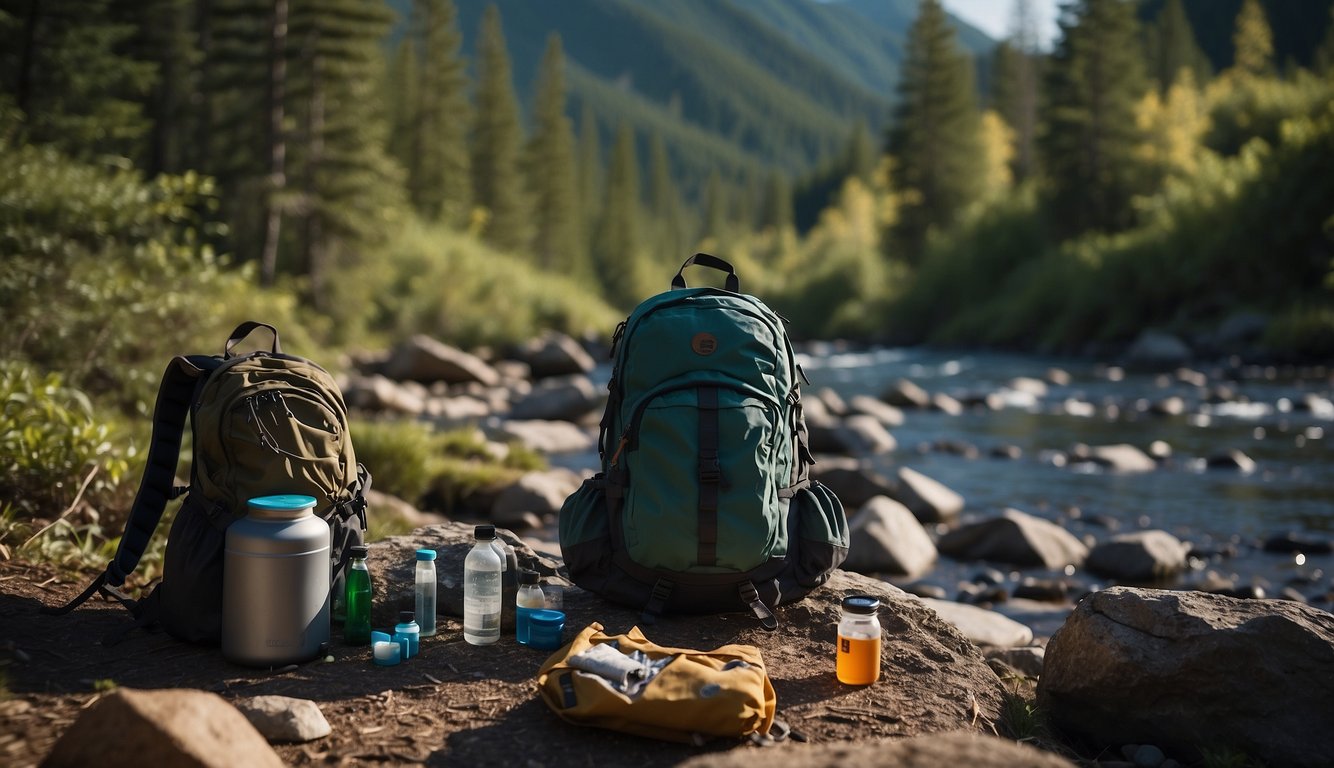
When managing wounds in wilderness settings, it’s essential to address specific challenges such as unpredictable environments and limited access to medical resources. It’s crucial to know the tailored treatments for different types of injuries, and how underlying health conditions can affect wound healing.
Handling Bites and Animal-Incurred Trauma
In the event of animal bites or related trauma, immediate and thorough cleansing of the wound is paramount. Animal saliva can introduce bacteria leading to infection like Pasteurella, which can quickly result in abscess formation or more severe infections like osteomyelitis. Use clean water or a saline solution to irrigate the wound. If possible, apply an antibiotic ointment and cover the area with a sterile dressing. It’s important to monitor the wound closely for signs of infection and seek professional medical help if symptoms develop.
| Actions for Animal Bites | Purpose |
|---|---|
| Irrigate with clean water/saline | To flush out debris and bacteria |
| Apply antibiotic ointment | To reduce the risk of infection |
| Cover with a sterile dressing | To protect the wound from contaminants |
| Monitor for infection | To ensure prompt treatment |
Care for Patients with Diabetes or Immunocompromise
If you have diabetes or are immunocompromised, ensuring proper wound care is even more critical in the wilderness to prevent complications. Your body’s healing process may be slower, increasing the risk for infections. Keep wounds clean and dry, and regularly check for any signs of infection like redness, warmth, swelling, or discharge. Minor injuries can spiral into severe infections without proper care. If you notice any concerning symptoms, prioritize finding medical assistance as these conditions can make you more susceptible to serious issues such as gangrene or osteo[myelitis.]
| Considerations for Compromised Individuals |
|---|
| Regularly inspect wound for infection signs |
| Seek immediate medical assistance if needed |
| Keep the wound environment clean and dry |
| Be aware of slower wound healing rates |
Long-Term Management of Wounds in the Wilderness
Long-term wound care in a remote setting requires diligence. You should perform regular wound evaluations and cleanings. If you’re in the wilderness for an extended time, know how to recognize infection signs and have a plan to evacuate if needed. Keep a sufficient supply of clean dressings and any other necessary wound care supplies. When dressing changes are required, do so with clean hands and tools to minimize the introduction of new contaminants.
| Long-Term Wound Care Steps |
|---|
| Regular wound evaluation and cleaning |
| Plan for evacuation if an infection arises |
| Maintain a clean supply of dressings |
| Change dressings with clean hands and tools |
Evacuation and Definitive Care
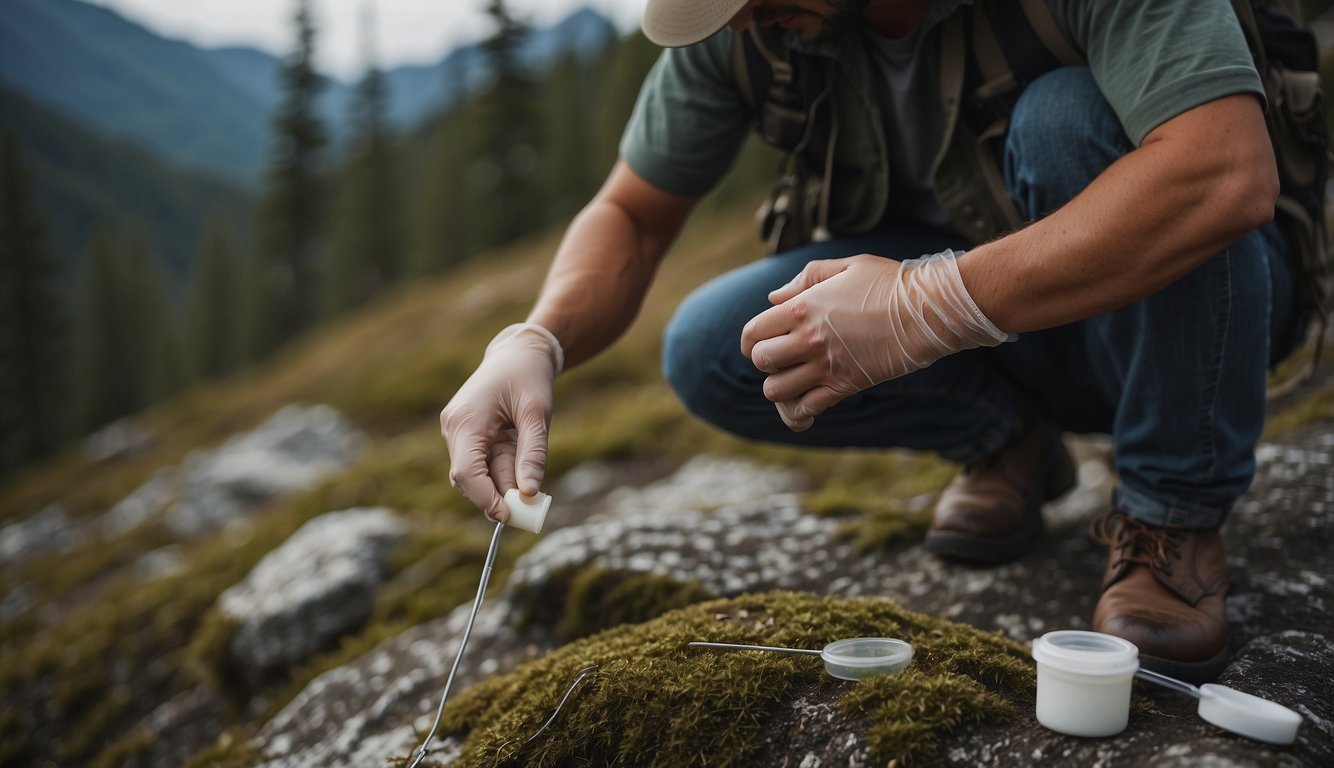
When you’re managing a wound in the wilderness, understanding when to evacuate a patient and how to transition to definitive care is crucial for a favorable outcome.
Criteria for Evacuation
Immediate Evacuation: If you observe life-threatening conditions such as severe bleeding, signs of systemic infection, or a wound affecting the airway, immediate evacuation is necessary.
- Signs to Watch:
- Severe pain
- Uncontrollable bleeding
- Rapid swelling
- Difficulty breathing
- Signs to Watch:
Delayed Evacuation: Some conditions require evacuation but are not immediately life-threatening. Close monitoring for worsening symptoms is essential.
- Monitor for Changes:
- Increased redness or swelling
- Pus or foul odor
- Fever
- Monitor for Changes:
Transitioning to Definitive Care
Before Leaving:
- Secure the wound with clean, appropriate dressings.
- Administer analgesics if available and necessary.
During Transport:
- Monitor vital signs.
- Keep the wound clean and dry.
Upon Arrival:
- Relay detailed information to healthcare providers.
- Ensure the continuation of care with minimal interruptions.
Documentation and Evacuation Procedures
- Documentation Prior to Evacuation:
- Record the time and cause of the injury.
- Note any first aid measures taken.
- Evacuation Procedures:
- Contact Authorities: Use the most reliable communication method available.
- Safety First: Plan your route considering the patient’s condition, terrain, weather, and available resources.
- Process: Secure the patient for transport with any means appropriate for the terrain such as a stretcher or improvised carrier.
Training and Supplies for Wilderness Wound Care
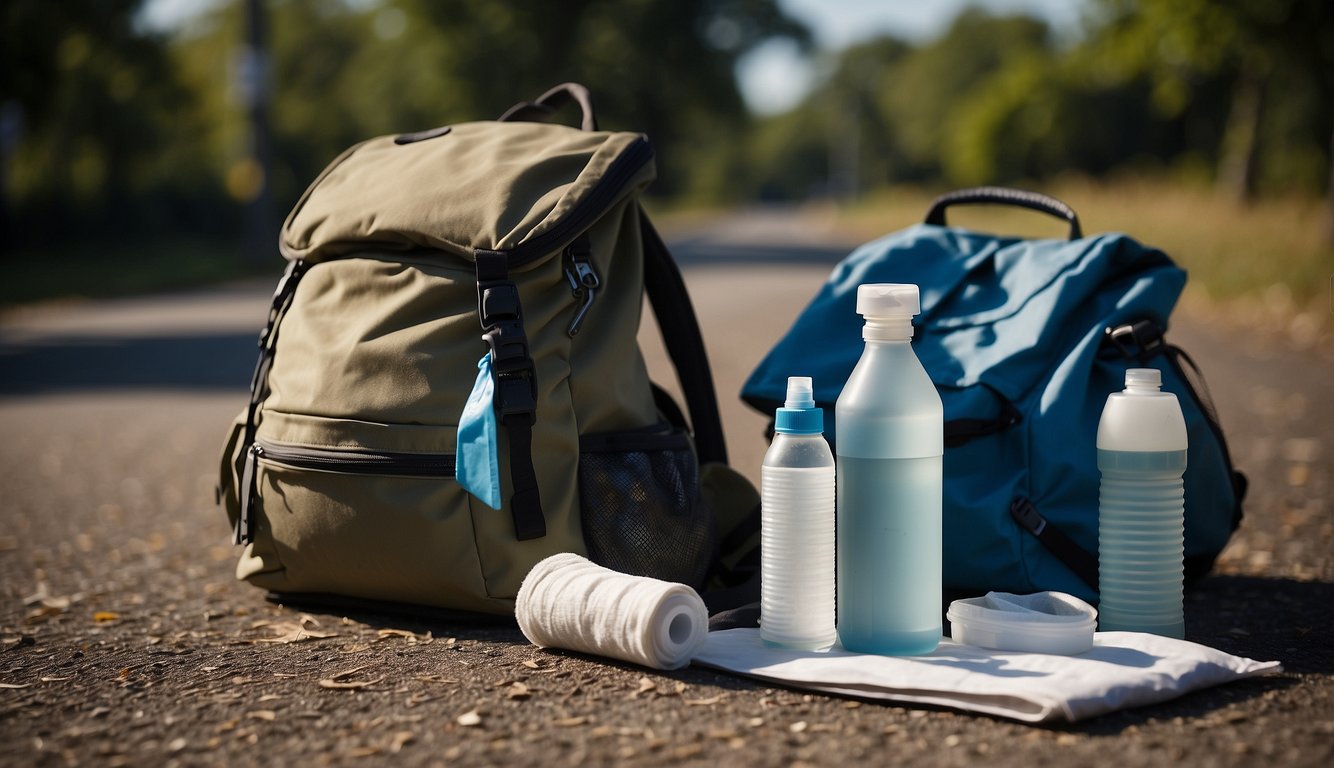
In a wilderness setting, being equipped with the right supplies and training can mean the difference between a quickly resolved issue and a medical emergency. Your preparedness should focus on having a well-stocked first aid kit and the knowledge to use it effectively, especially in remote locations where help is not readily available.
Essential Supplies for Wilderness First Aid Kits
Your wilderness first aid kit should include the following items tailored for wound care:
- Bandages: Various sizes of adhesive bandages, gauze pads, and butterfly bandages.
- Tape: Medical tape to secure gauze and bandages.
- Antiseptic: Wipes and solutions such as hydrogen peroxide or iodine to clean wounds.
- Tweezers and Scissors: For removing debris and cutting dressings.
- Latex gloves: To maintain hygiene during wound care.
- Antibiotic ointment: To prevent infection in minor cuts and scrapes.
- Hemostatic agents: Such as powders or sponges that help control bleeding.
Ensure these items are packed in a waterproof container to keep them clean and dry.
Education and Skill Development
To effectively manage wounds in the wilderness:
- First Aid Certification: Obtain a first aid certificate from a recognized organization. This should include wilderness-specific scenarios.
- Practice: Regularly practice wound care techniques to maintain your proficiency.
- Continual Learning: Stay updated on best practices and new techniques by taking refresher courses or workshops.
Familiarize yourself with typical wilderness injuries and how to treat them with confidence and clarity.
Resource Management in Remote Locations
When you’re in a remote area, resource conservation is crucial:
- Inventory: Regularly check your first aid kit’s inventory and replenish supplies before they expire or run out.
- Usage: Learn how to use each item in multiple ways to extend the life of your supplies.
- Improvisation: Develop the skill to improvise with available materials in case you run out of specific supplies. This could mean using a bandana as a sling or a piece of clean cloth as a temporary bandage.
Your ability to manage resources effectively can greatly improve wound care outcomes in wilderness settings.
Evidence-Based Practice and Guidelines
When venturing into wilderness settings, it is crucial to adopt evidence-based guidelines for wound care to mitigate infection risks effectively. This approach will help you navigate the complexity of managing wilderness injuries where conventional medical resources are not readily accessible.
Utilizing Research and Publications
To manage wilderness injuries, you should be well-versed in the latest research and publications. Valuable resources such as PubMed and Elsevier Inc provide a wealth of peer-reviewed studies, including randomized controlled trials, observational studies, and case series. These studies form the core of evidence-based practices, guiding your decisions in wound care.
- PubMed: A go-to database for up-to-date medical research.
- Elsevier Inc: Publishes a broad spectrum of scientific literature.
Consult these databases periodically to stay informed about advancements in basic wound care.
Best Practices from Expert Panels and Studies
Expert panels, such as the Cochrane Collaboration, synthesize information from studies to recommend best practices. Look for guidelines with high recommendation grades from expert consensus. They often analyze data from various types of research, prioritizing randomized controlled trials for their robustness.
- Cochrane Collaboration: Advocates for rigorous scientific methodology.
- Recommendation Grades: Essential for determining the reliability of guidelines.
By following these best practices, you can apply management strategies that are vetted by leading health experts.
Updating Protocols with Emerging Evidence
Your protocols for wilderness wound care should evolve with emerging evidence to tackle management challenges effectively. Evidence-based guidelines require periodic review and adaptation:
- Monitor New Findings: Keep an eye on the latest results from ongoing research.
- Revise Protocols: Adjust your care methods based on new evidence.
- Risk-Benefit Analysis: Weigh the practicality and effectiveness of implementing changes in a wilderness setting.
Staying current with the latest evidence guarantees that your approach to wound care is both informed and practical.
Legal and Ethical Considerations in Wilderness Medicine
When administering wilderness medicine, you must be mindful of legal and ethical responsibilities. Your actions should respect patient autonomy and consider legal impacts that could affect morbidity and disability outcomes.
Informed Consent and Patient Autonomy
It’s crucial to obtain informed consent from a patient before providing care, assuming the patient is capable of making their own decisions. This means explaining:
- The nature of the treatment
- Possible benefits and risks
- Alternatives to the proposed treatment
Remember, in a wilderness setting, communication can be challenging, yet it is essential to ensure that the patient understands the situation to make autonomous decisions.
Legal Obligations and Protections for Wilderness Responders
As a wilderness responder, be aware of the legal framework that governs your actions. You have an obligation to:
- Provide care within the scope of your training.
- Recognize and operate within the Good Samaritan laws, which may offer some protection against liability, as long as you act without gross negligence.
In case of patient morbidity or disability, documentation of all care provided and decisions made can offer legal protection. It’s also important to understand the implications of your actions and how they might be perceived from a legal standpoint in case of adverse outcomes.
Conclusion
In wilderness environments, taking proactive measures to prevent infections is critical. Infectious disease can occur due to interactions with microbial organisms, of which some may exhibit a notable degree of virulence. Your understanding of proper wound care can be the line of defense against such pathogens.
To maintain an effective wound care regimen, consider the following:
- Immediate Action: Clean wounds as soon as possible with clean water to reduce the likelihood of infection.
- Dress Appropriately: Use sterile dressings to cover the injury, and change them regularly.
- Monitor Consistently: Keep an eye for signs of infection, including redness, swelling, increased pain, or discharge.
Be equipped with a well-stocked first aid kit that includes:
- Antiseptic wipes
- Sterile gauze pads
- Adhesive bandages of various sizes
- Antibacterial ointment
In case of animal bites or deep wounds, seek professional medical attention promptly, as these present a higher risk of serious infection.
Remember, your diligence and preparedness can make a significant difference when you’re off the beaten path. Stay informed and stay safe.

Leave a Reply